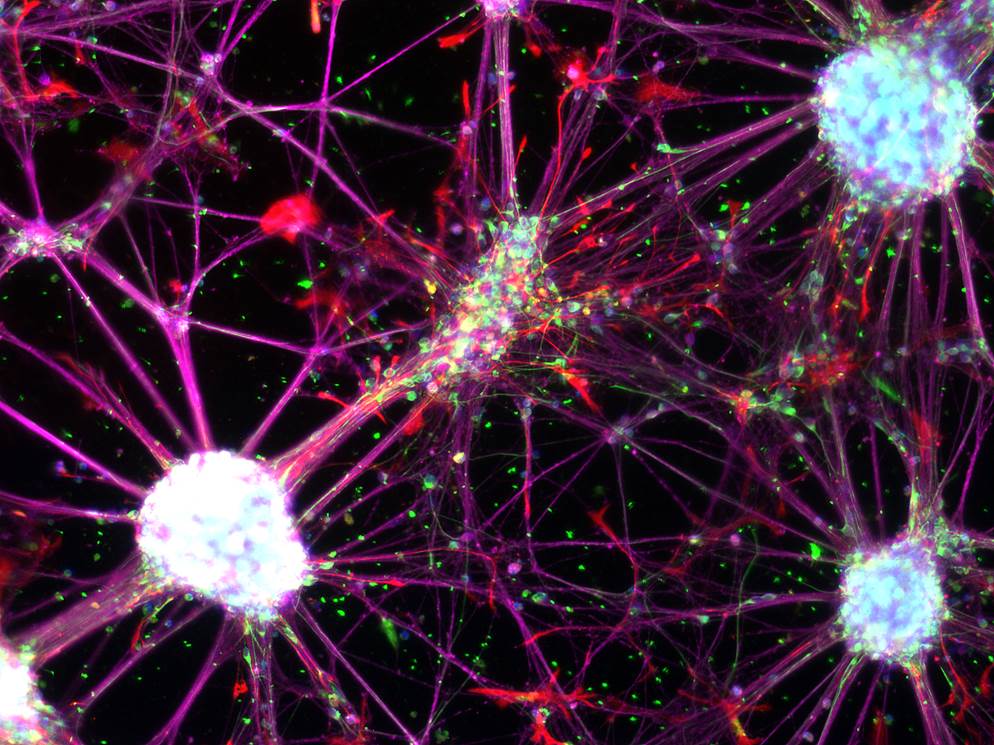Diabetes and erectile dysfunction may be genetically linked
Genetic susceptibility to type 2 diabetes may be a cause of erectile dysfunction according to new research. Erectile dysfunction (ED) is defined as persistent inability to achieve and maintaining an erection sufficient for sexual intercourse. Causes are usually medical but can also be psychological. Organic causes are usually the result of an underlying medical condition affecting the blood vessels or nerves supplying the penis as well as numerous prescription drugs, recreational drugs, alcohol, and smoking.
Read More
Can exercise lower blood pressure as effectively as drugs?
According to the Centers for Disease Control and Prevention (CDC), roughly 75 million adults in the U.S. have to manage elevated blood pressure, where it exceeds the threshold of 140 millimeters of mercury (mm Hg). The condition can put these individuals at increased risk of developing coronary heart disease or experiencing a stroke, which are both the main causes of death within the U.S.
Read More
What is Fibrocystic Breast Disease?
Fibrocystic breast disease describes healthy breast tissue that feels lumpy and may sometimes be painful. It is not harmful because it is not a true disease. Fibrocystic changes is another name that...
[[ This is a content summary only. Visit my website for full links, other content, and more! ]] https://www.medical-institution.com/fibrocystic-breast-disease/
Research Finds Increased Physical Activity Boost Mood and Energy in Bipolar Disorder
Real-time Mobile Monitoring of the Dynamic Associations Among Motor Activity, Energy, Mood, and Sleep in Adults With Bipolar Disorder. New research, published in the JAMA Psychiatry, discovered that greater levels of physical exercise enhance mood and energy levels. The advantages had been significantly noticeable in individuals with bipolar disorder. https://www.medical-institution.com/bipolar-physical-activity-may-boost-mood-and-energy/
For the First Time Scientists Have Directly Reprogrammed Human Blood Cell Into Neural Stem Cells
Scientists Have Directly Reprogrammed Human Blood Cell Into Neural Stem Cells For The First Time. These induced stem cells are similar to those that occur during the early embryonic development of the central nervous system. They can be modified and multiplied indefinitely in the culture dish and can represent an important basis for the development of regenerative therapies.
Read More
How to treat paronychia (an infected nail)

Leg Nerves Activated by Light Offer New Path to Restoring Mobility

via Medical Institution https://www.medical-institution.com/leg-nerves-activated-by-light-offer-new-path-to-restoring-mobility/
Prostate Cancer: A New, Quicker Test to Assess Metastasis Risk - Medical Institution

There is a risk of metastatic tumor formation for people with prostate cancer. A newly developed test can assess this risk more quickly than existing tests and is also cheaper to run.
According to the National Cancer Institute, about 11.2% of men will receive a prostate cancer diagnosis at some point in time.
In 2015 — the most recent year for which data are available — an estimated 3,120,176 men in the United States were living with prostate cancer.
Individuals with a first-time prostate cancer diagnosis and those who have undergone previous treatment for this form of cancer need to receive tests to determine their risk of metastasis.
If the risk of cancer spreading is high, the doctor may advise the person to proceed with a more aggressive type of treatment.
Researchers from the Albert Einstein College of Medicine in New York City, NY, have collaborated with colleagues from other research institutions to develop a new test for the assessment of metastasis risk. The new test, they say, is cheaper and faster than other methods currently available, and it requires only small tissue samples.
Type 2 Diabetes Mellitus – Diagnosis, Management, Treatment and Complications
TYPE 2 DIABETES MELLITUS:
Diabetes Mellitus is metabolic disorder that causes blood sugar (glucose) levels to rise higher than normal (hyperglycemia). Type 2 Diabetes Mellitus is one of the major causes of early illness and death worldwide. It is the most common form of diabetes and it accounts for over 90% of patients with diabetes. Type 2 Diabetes Mellitus is characterized by insulin resistance leading to increase insulin production by the Beta-cells of the pancreas.Over time, the insulin secretory capacity of the pancreas becomes unable to overcome insulin resistance, resulting in progressive deterioration of Beta-cell function and steady decrease in plasma insulin and subsequently an increase in plasma glucose. Although obesity is the most important risk factor for Type 2 Diabetes Mellitus, other important risks factors such as; positive family history, ethnicity (e.g. Native Americans, African Americans, Hispanics, Asian Americans and Pacific Islanders), age and gender have also been associated with increased risk for developing Type 2 Diabetes Mellitus.
DIAGNOSTIC CRITERIA BASED ON ADA GUIDELINES:
Symptoms of hyperglycemia — The diagnosis of diabetes mellitus is easily established when a patient presents with classic symptoms of hyperglycemia (thirst, polyuria, weight loss, blurry vision) and has a random blood glucose value of 200 mg/dL (11.1 mmol/L) or higher.
Asymptomatic — The diagnosis of diabetes in an asymptomatic individual can be established with any of the following criteria:
– Fasting plasma glucose (FPG) values ≥126 mg/dL (7.0 mmol/L). Fasting is defined as no caloric intake for at least eight hours.*
– Two-hour plasma glucose values of ≥200 mg/dL (11.1 mmol/L) during an oral glucose tolerance test (OGTT)
– A1C values ≥6.5 percent (48 mmol/mol)
– Fasting plasma glucose (FPG) values ≥126 mg/dL (7.0 mmol/L). Fasting is defined as no caloric intake for at least eight hours.*
– Two-hour plasma glucose values of ≥200 mg/dL (11.1 mmol/L) during an oral glucose tolerance test (OGTT)
– A1C values ≥6.5 percent (48 mmol/mol)
Categories of increased risk for diabetes:
– FPG between 100 and 125 mg/dL (5.6 to 6.9 mmol/L).
– Two-hour plasma glucose value during a 75 g OGTT between 140 and 199 mg/dL (7.8 to 11.0 mmol/L).
– Persons with 5.7 to 6.4 percent (39 to 46 mmol/mol), (6.0 to 6.4 percent [42 to 46 mmol/mol] in the International Expert Committee report) are at highest risk, although there is a continuum of increasing risk across the entire spectrum of A1C levels less than 6.5 percent (48 mmol/mol).
– FPG between 100 and 125 mg/dL (5.6 to 6.9 mmol/L).
– Two-hour plasma glucose value during a 75 g OGTT between 140 and 199 mg/dL (7.8 to 11.0 mmol/L).
– Persons with 5.7 to 6.4 percent (39 to 46 mmol/mol), (6.0 to 6.4 percent [42 to 46 mmol/mol] in the International Expert Committee report) are at highest risk, although there is a continuum of increasing risk across the entire spectrum of A1C levels less than 6.5 percent (48 mmol/mol).
Read more
New high-tech epilepsy warning bracelet could save lives - Medical Institution

Smartwatches are gaining popularity, and they often help users monitor their health in different ways, such as by recording sleeping habits or heart rates.
A new seizure-detecting device, the Nightwatch, goes a crucial step further and can alert caregivers to severe nighttime seizures.
The researchers, who published their results in the journal Neurology, believe that this bracelet could be a vital tool for people with epilepsy.
Sudden unexpected death in epilepsy (SUDEP) is the leading cause of death in those with the condition. The risks of death are even higher in people who have therapy-resistant epilepsy and an intellectual disability.
The research team, based in the Netherlands, tested the Nightwatch with 28 intellectually disabled participants who have epilepsy.
Mediterranean diet nutrients tied with healthy brain aging
Eating a diet rich in fruits and vegetables can promote healthy brain aging.
It found links between blood markers of certain nutrients in the Mediterranean diet and mental performance and brain connectivity in older adults.
Previous research suggested that older adults who most closely follow a Mediterranean diet have better brain function.
Subscribe to:
Posts (Atom)





